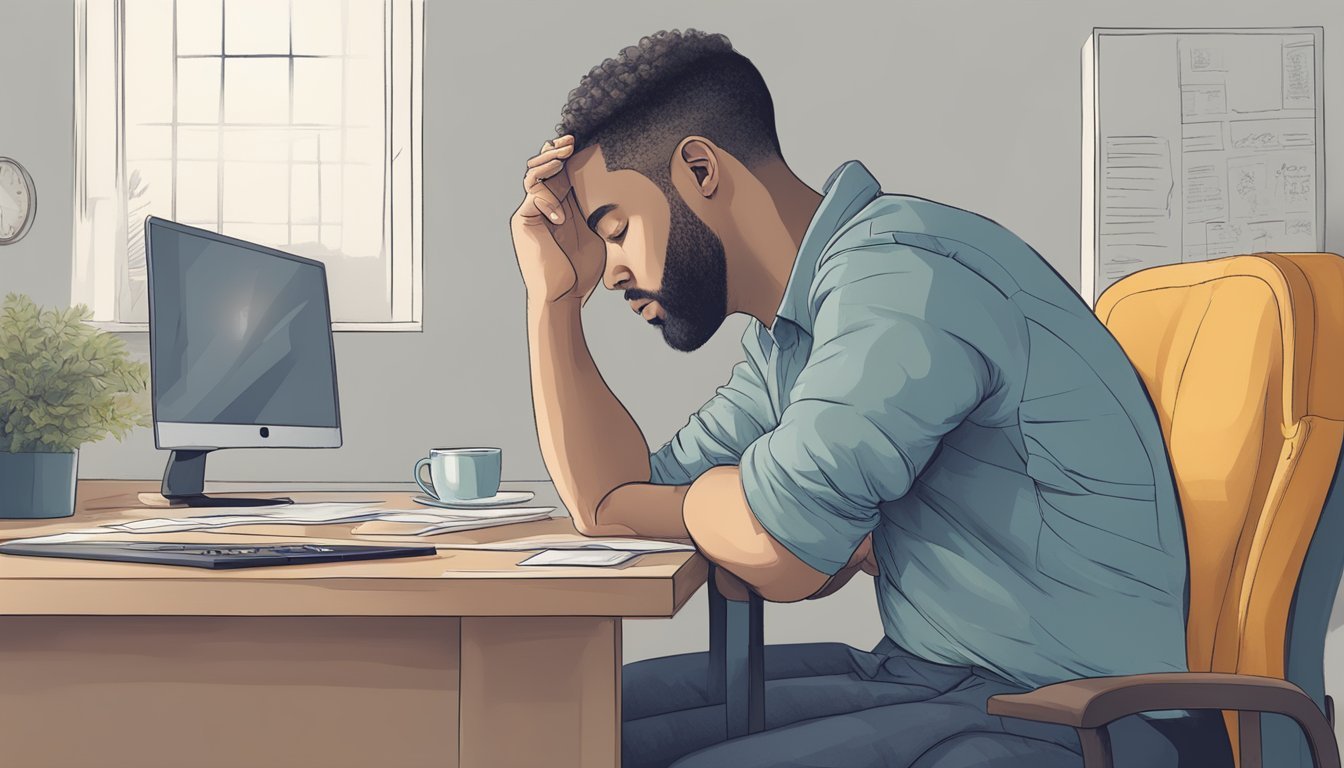7 Myths About PTSD Debunked by Mental Health Professionals
Clear Insights from Experts
Post-Traumatic Stress Disorder (PTSD) affects countless individuals worldwide, yet misconceptions about the condition persist. These myths can hinder those seeking help and adequate treatment. Understanding the realities of PTSD is crucial for better support and effective management.
Mental health professionals emphasize the importance of debunking these myths to pave the way for more informed discussions. With accurate information, individuals can approach PTSD with compassion and the right resources, significantly improving the path to recovery.
1) PTSD only affects military veterans
A common myth is that PTSD only affects military veterans. This belief is incorrect.
PTSD can impact anyone who has experienced a traumatic event. Traumatic events can include natural disasters, car accidents, or physical assault. The brain’s response to these traumatic events can lead to PTSD, regardless of the person's background or profession.
While veterans may have a higher exposure to traumatic events due to combat, they are not the only group at risk. Civilians can develop PTSD from traumatic events in their everyday lives.
PTSD symptoms include recurring distressing memories, flashbacks, and severe anxiety. These symptoms can interfere with daily life and mental health for anyone, not just veterans.
Awareness that PTSD is not exclusive to the military is important for encouraging all individuals experiencing trauma to seek help.
2) People with PTSD are violent
The belief that people with PTSD are inherently violent is a misconception. PTSD, or Post-Traumatic Stress Disorder, affects individuals differently, and the severity and type of symptoms can vary widely.
Aggression is not a core symptom of PTSD. Many people with PTSD experience symptoms such as intrusive thoughts, nightmares, and avoidance of trauma-related triggers. These symptoms do not necessarily lead to violent behavior.
Research indicates that those with PTSD are more likely to harm themselves rather than others. They may struggle with feelings of anxiety, depression, or hypervigilance, but these emotions do not equate to an increased risk of violence towards others.
The myth persists partly due to media portrayals that sensationalize violent acts linked to PTSD. Such portrayals are often inaccurate and do not reflect the everyday reality for most people living with the disorder.
In fact, many individuals with PTSD are seeking treatment and support to manage their symptoms. They may participate in therapy, support groups, or medication regimens. These efforts underscore their desire for healing and stability, rather than causing harm.
It is important to understand PTSD accurately and avoid stigmatizing those who live with it. Misconceptions can prevent people from seeking the help they need and deserve.
3) PTSD is a Sign of Weakness
PTSD is often wrongly perceived as a sign of weakness. This misconception is harmful and unfounded. People who develop PTSD have experienced intense trauma, and their reaction is a normal response to abnormal circumstances.
Mental health professionals emphasize that PTSD is linked to changes in the brain. Trauma can alter cognitive functions such as memory and problem-solving. This makes PTSD a medical condition, not a reflection of personal strength.
The idea that coping with PTSD signifies weakness is another myth. Many individuals with PTSD continue to lead productive lives with proper treatment and support. Their experiences and struggles don't diminish their strength; instead, they illustrate resilience.
For a more detailed understanding, visit 8 Common Myths About PTSD.
4) Medication is the only treatment
Medication is often thought to be the sole treatment for PTSD. This is a common misconception.
While psychiatric medications can be highly effective in alleviating symptoms, they are not the only option available. Therapy plays a crucial role in the treatment of PTSD.
Cognitive Behavioral Therapy (CBT) and Eye Movement Desensitization and Reprocessing (EMDR) are well-established therapeutic approaches. These methods have shown significant success in helping individuals process traumatic experiences.
Holistic practices, such as mindfulness and yoga, can also contribute to a comprehensive treatment plan. Engaging in these practices helps reduce stress and promote emotional well-being.
Support groups provide a valuable space for sharing experiences and receiving emotional support. Participants often find solace in knowing they are not alone in their struggles.
It's important to recognize that combining different treatment modalities tailored to an individual's needs can lead to the best outcomes. Mental health professionals often recommend a combination of medication, therapy, and lifestyle changes for comprehensive care.
For more information on debunking myths about PTSD, visit 7 Myths Debunked About PTSD.
5) PTSD is a lifelong condition
PTSD, while serious, is not necessarily a lifelong condition. Treatments such as cognitive-behavioral therapy (CBT) and eye movement desensitization and reprocessing (EMDR) have shown effectiveness in reducing or even eliminating symptoms. Individuals often see significant improvement with the right mental health support.
The idea that PTSD cannot be treated might prevent some from seeking help. Early intervention and proper treatment can lead to a better prognosis. This myth may contribute to stigma and misunderstanding surrounding the condition.
PTSD symptoms can fluctuate over time. Some people may experience periods of remission. Others might struggle with symptoms intermittently. It's important to understand that individual experiences with PTSD can vary widely.
Persistent myths about PTSD being a permanent condition can affect those living with it. Reliable information and awareness can encourage those affected to pursue professional care. For more information, consider visiting Bustle's article.
PTSD does not define a person indefinitely. With access to effective therapies and support, many can lead fulfilling lives. Recognizing this can empower individuals to take proactive steps in their mental health journey.
6) PTSD sufferers should just avoid triggers
Avoiding triggers might seem like a straightforward solution for those with PTSD, but it is not always effective. Triggers are unavoidable in many situations and environments. Simply steering clear can prevent individuals from engaging in everyday activities.
Constant avoidance can actually reinforce fear and anxiety. When someone avoids a trigger, they don't have the opportunity to process and manage their reactions. This can lead to increased isolation and heightened sensitivity to triggers.
Effective coping strategies involve therapeutic approaches. Techniques like cognitive-behavioral therapy (CBT) and exposure therapy help individuals confront and manage their triggers. Through these methods, PTSD patients learn to reduce the power these triggers have over them.
Avoidance can also mask underlying issues that need attention. Therapists encourage gradual and supported exposure to triggers. This allows PTSD sufferers to build resilience and reclaim their lives. Helping individuals learn healthy coping mechanisms is crucial.
It's important to recognize that professional guidance is essential in this process. Mental health professionals have the tools and knowledge to guide patients through trigger management, ensuring a balanced and sustainable approach to PTSD treatment.
For additional information, visit the article on PTSD triggers and coping mechanisms.
7) Children can't experience PTSD
A common myth about PTSD is that children cannot experience it. This is untrue. Children are susceptible to PTSD just like adults. Traumatic events such as physical or emotional abuse, natural disasters, or witnessing violence can trigger PTSD in children.
Symptoms in children often differ from those in adults. They may include flashbacks, nightmares, and hypervigilance.
Children with PTSD might also exhibit more subtle signs like seeming "out of it" or being unusually nervous and jittery. These symptoms can start soon after the traumatic event or might not appear until months later.
Various treatments are available for children with PTSD. These include therapy techniques tailored to young patients, and in some cases, medication may be considered. Early intervention can make a significant difference in managing and reducing the impact of PTSD in children.
For more detailed information, visit Psych Central's PTSD in Children and Stanford Children's Posttraumatic Stress Disorder (PTSD) in Children. These resources provide additional insights and support tools for understanding PTSD in younger populations.
Understanding PTSD
PTSD, or Post-Traumatic Stress Disorder, is a mental health condition triggered by experiencing or witnessing traumatic events. Key factors in its development include specific stressors and genetic predispositions.
What Is PTSD?
PTSD is a mental disorder characterized by severe anxiety, flashbacks, and intrusive thoughts following trauma. Symptoms may manifest immediately or years after the event. Common indicators include nightmares, severe anxiety, and uncontrollable thoughts related to the trauma.
PTSD can affect anyone, regardless of age or background. It disrupts daily functioning, making normal activities challenging. Effective treatments like therapy and medication are available. Understanding and recognizing symptoms early can lead to better outcomes.
Causes and Risk Factors
Several factors can contribute to PTSD development. Trauma types vary, encompassing physical or sexual assault, natural disasters, accidents, and military combat. People with a history of mental health issues may be more susceptible.
Risk factors include genetics, prior trauma, and lack of support systems. Certain professions, such as emergency responders and military personnel, also face higher risk due to frequent exposure to traumatic events.
Moreover, the severity and duration of the trauma, as well as the individual’s proximity to the event, play crucial roles. Recognizing these factors can aid in early intervention and prevention.
Common Myths About PTSD
Several misconceptions about PTSD exist. Addressing these myths is crucial for improving understanding and encouraging those affected to seek help.
PTSD Only Affects Veterans
A common belief is that PTSD only affects military personnel. While many veterans do experience PTSD due to combat-related trauma, it is not exclusive to them.
Anyone exposed to significant trauma, such as natural disasters, serious accidents, or violence, can develop PTSD. According to the PTSD Alliance, symptoms may appear immediately or even years after an event. This broadens the scope of who might be affected by PTSD beyond just veterans.
PTSD Equals Weakness
Another myth is that PTSD indicates a weakness in character. This misunderstanding can prevent individuals from seeking treatment. PTSD is linked to changes in the brain's fear response and cognitive functions, such as memory and problem-solving, as noted by The Recovery Village.
Labeling PTSD as a sign of weakness ignores its basis in neurological changes and trauma. It is a diagnosable mental health condition recognized by medical professionals, emphasizing that it is not related to personal strength or resilience.
By addressing these myths, society can foster a more supportive environment for those affected by PTSD.
Effective Treatments
Effective treatments for PTSD often combine therapeutic interventions and medications to manage symptoms and improve quality of life. The following outlines some key approaches that have shown significant results for many individuals.
Therapeutic Interventions
Cognitive Behavioral Therapy (CBT) is one of the most widely used therapies for PTSD. It helps patients identify and change distorted thought patterns contributing to their distress.
Prolonged Exposure Therapy involves gradually exposing patients to trauma-related memories or situations in a controlled environment, reducing fear over time.
Eye Movement Desensitization and Reprocessing (EMDR) uses bilateral sensory input, like moving eyes back and forth, to help reprocess and integrate traumatic memories.
Group therapy provides a shared environment where individuals can connect with others who have similar experiences, fostering support and understanding.
Medications and PTSD
Selective Serotonin Reuptake Inhibitors (SSRIs), such as sertraline and paroxetine, are commonly prescribed to manage PTSD symptoms like depression and anxiety.
Prazosin, typically used to treat high blood pressure, has been effective in reducing nightmares related to PTSD.
Antidepressants and anti-anxiety medications can help manage mood swings and other debilitating symptoms.
Medication should often be used in combination with therapy for the best outcome.
Care and monitoring by a healthcare provider ensure that treatments are adjusted as needed to maximize effectiveness and minimize side effects.




